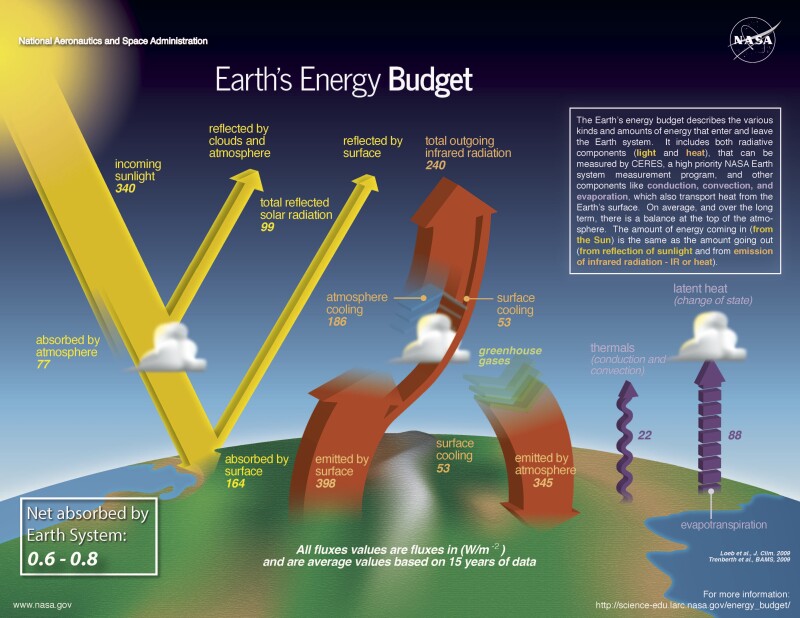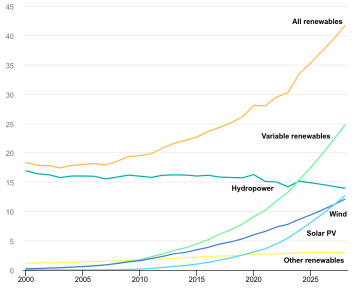I have just sat down, fastened my seat belt, and am ready for my umpteenth flight. I feel fortunate to have a window seat, allowing me to look outside while I fly home. As we gain altitude I see cars, buildings, and cities getting smaller. There are some light clusters, probably near factories or commercial centers, however nothing moves in these outposts. Do we actually need all these lights turned on?
My thoughts trouble me. The global society is strongly based on the utilization of petroleum products, such as fuels, plastics, and pharma, which have enabled a certain standard of living. Nevertheless, the usage of these beneficial products results in the production of others such as particulate matters, greenhouse gases, nitrogen derivatives (NOx), and carbon dioxide (CO2).
CO2 has been shown to be the main culprit of the greenhouse effect. According to the US Global Change Research Program, the amount of CO₂ in the atmosphere has increased more than 20% in less than 44 years. CO2 is something like a parasite: It is the main combustion product of hydrocarbon-based fuels, and it cannot be easily captured nor consumed because it is chemically stable at ambient conditions. We could say that the price of living in a petroleum-based society is just CO2 accumulation into the atmosphere, however this involves a lot of consequences.
Earth’s Budget Is Limited
Nevertheless, what does a “petroleum-based society” mean? It is undeniable that there are too many people for the amount of natural resources offered by Earth. Earth Overshoot Day observes the day on which humanity exhausts nature’s sustainable budget for the year. Further production after Earth Overshoot Day creates an ecological deficit.

People wake up every day, turn off the alarm, switch on the light, move to the kitchen with their mobile phone in their hand, and have breakfast in front of the TV—immediately consuming energy.
There is an undeniable need for a constant supply—the key word being constant. How do we obtain constant energy from natural resources? The sun shines up to 10 hours a day, if it is not a cloudy day. Wind is even more inconsistent, as well as hydropower, while nuclear energy is a hard sell because of past disasters. Even a mix of renewable sources is vulnerable—there is a real probability of having cloudy, windless days, which could lead to a dramatic lack of energy.
Why don’t we store energy? Currently there is no man-made economic, scalable way of storing energy for later use. There are, however, hydrocarbons. Thus, combustion processes are the only way of ensuring constant energy production with current technologies.
The Role of Renewable Sources
The share of renewables in the energy mix almost doubled in the past decade. It is recognized that the energy mix could be a strategy for the energy transition; however, the definition of renewable sources of energy is something with unclear contours.

For example, nuclear energy is not considered as a green source (a term currently used as synonym of “environmentally friendly”) in Europe due to the role of radioactive byproducts. However, there is a lack of concern about the amount of byproducts in relationship with produced energy.
If we were to compare two electric power plants, the nuclear one would produce about 30 tons/1,000 MW of radioactive byproducts, while a coal-based plant every 1,000 MW of electric power would produce up to 300,000 tons of ash and about 6 million tons of CO2.
There is another important difference between nuclear byproducts and CO2: the latter must be captured because it is in a gaseous phase, while the former are solids, directly storable. However, the design and the construction of a nuclear power plant requires up to 20 years. The case of nuclear energy has been analyzed because it is the only one which could guarantee the same, continuous energy supply as fossil fuels.
For example, photovoltaic (PV) panels exploit the most abundant source of energy: the Sun. Most efficient PV panels promote up to 175 W/m2 of soil (surface area) covered. What does it mean? For electric power generation of 1 GW we would need more than 5.7 million m2 of soil, or, in other words, about 837 soccer fields. And they would work up to 8 hours a day, without providing continuous supply. Thus, the needed amount of energy cannot fully match the one that green sources can provide with current technologies.
Carbon Capture, Utilization, and Storage (CCUS)
Carbon capture, utilization, and storage (CCUS) may allow society maintain the lifestyle it has become a customed to without significant behavioral modification. The history of CO2 underground storage goes back to the early 21st century.
Why is CCUS one of the most relevant topics of the energy transition? Let’s imagine we want to store the CO2 in 50000 m3 stainless-steel tanks. The optimal conditions of CO2 storage are in the range of dense phase, liquid or supercritical. Since pressure above 73.9 bar and temperature above 31.1°C are required for the supercritical phase, we could imagine that the storage would happen at high pressure, but ambient temperature. For example, if we consider a pressure of 150 bar and a temperature of 15°C, CO2 would have a resulting density of about 900 kg/m3. If we want to store the amount of CO2 released by the European Union from fossil fuels, 3.08 billion tons in 2022, more than 61,000 spherical tanks per year would be required. Where we would put all these tanks?
Geological Trapping

Depleted reservoirs and aquifers are fundamental for underground CO2 storage. While depleted reservoirs are prospects for exploitation because they trapped hydrocarbons for millions of years, aquifers use the ability of water to dissolve CO2. Currently, there are approximately 395 projects in the commercial carbon capture and storage (CCS) facilities pipeline worldwide in 2024 with 198 in North America.
Oil and gas companies play major roles thanks to the consolidated knowledge on subsurface technologies. In fact, gas injection has been used for decades to enhance oil recovery. The main limits of underground storage are represented by the adaption of advanced tools for CO2 injection due to its peculiar characteristics and the development of monitoring tools, because it is necessary that it stay permanently inside the storage site.
Is there any way of carrying on energy transition, without losing our habits? Perhaps.
Are we able to do it? Not yet.
Do we actually need all these lights turned on?
For Further Reading
Scripps Carbon Dioxide (CO2) Measurements, Global Monitoring Laboratory.
Share of Renewable Electricity Generation by Technology 2000-2028, International Energy Agency.
Criteria for Intermediate Storage of Carbon Dioxide in Geological Formations by S. Soloman, The Bellona Foundation.
Maximum Efficiency Nuclear Waste Transmutation by J. Wallenius, Royal Institute of Technology.
Annual CO₂ Emissions, Our World in Data.
Number of Commercial Carbon Capture and Storage (CCS) Facilities Worldwide as of 2024 by Region, Statista.
Atmospheric Carbon Dioxide, US Global Change Research Program.


